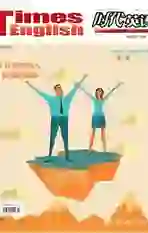跟踪导练(一)
2017-08-09
阅读理解
A
Parents meetings may be your worst nightmare(噩梦). However, thats not always the case. The parents meeting we had after our mid-term examinations, for instance, couldnt have been more surprising.
Sitting in our chairs next to our parents, we felt like we were on pins and needles, expecting a final outburst when they examined our grades and rankings. However, our teacher came to our rescue. He told our parents the stress we faced in our daily school lives and how hard we had worked for the college entrance examination. “No matter the score, they all studied very hard and each one of them has made progress. They deserve encouragement rather than blame,” he said. When they heard these words, many parents nodded, their anger gone. Well, to be honest, we hadnt worked that hard before the meeting, but we decided we would try our best to live up to our teachers expectations after it.
Another highlight of this parents meeting was when our parents read our letters that we had written in advance. In our daily lives, we are so busy doing homework and preparing for exams that we hardly have time to communicate with our parents. Yet this parents meeting gave us an opportunity to show our appreciation. In the letters, we expressed our love for them and gratitude for everything they had done for us. Many parents burst into tears after reading their childrens letters.
So you see, our parents meetings may not be as bad as we think. They could be opportunities to bring us closer to our parents.
1. What does the underlined phrase “on pins and needles” in Paragraph 2 mean?
A. Restless. B. Proud.
C. Curious. D. Sleepy.
2. How did many parents feel before they heard the teachers words?
A. Excited. B. Stressful.
C. Disappointed. D. Angry.
3. Who was moved most during the meeting?
A. The students. B. The parents.
C. Our teacher. D. Our headmaster.
4. Whats the main purpose of the parents meeting?
A. Living up to the teachers expectations.
B. Bringing the teacher and our parents closer.
C. Expressing students love for parents and teachers.
D. Showing concern and understanding for the students.
B
When you were a kid, did you ever draw pictures in the dirt with sticks? There is a man named Stan Herd who is very skilled at playing in dirt!
Stan Herd was born into a family of farmers in 1950 and grew up in a very small town in Southwest Kansas. He was a talented painter. When he started doing murals(壁畫) he realized he enjoyed doing a huge work of art. Then, while flying over a field once, he got the idea of using the earth as his canvas(画布). In 1976, he returned to farming roots and invented a new form of artwork called “crop art” or “Earthworks”. Herd is the first known American to use the earth as canvas.
To create these giant designs, Herd usually starts by making an outline(輪廓) with bricks. After that, he begins filling in the area with materials. These can range from different colors of dirt, sand, and rocks to different types of plants and flowers. Herd often uses local volunteers to help with his projects because his projects are too big for just one person. While he is creating his pieces, he sometimes looks at them by going up in a hot air balloon, but usually he just creates his work based on his previous experience.
Herds personal artwork frequently focuses on the theme of farm life. Herd comes from a family of farmers. His art aims to show respect for their hard work. He has also devoted his time to creating an earthen medicine wheel at Haskell Indian Nations University—a big project that he is very proud of. Through years of practice, he created his own art form by combining his farm upbringing(教养) with his love of art.
5. Herd thought of using crop fields as his canvas when ___ .
A. he was working in a field
B. he was creating a large mural
C. he was drawing pictures in the dirt
D. he was flying over a field by plane
6. What is Paragraph 3 mainly about?
A. How Herd creates his works.
B. How Herd helps local volunteers.
C. How Herd gets the ideas for his designs.
D. How Herd has a birds-eye view of his works.
7. Why did Herd use farm life as the theme of his works?
A. He chose it by chance.
B. He had deep feelings about it.
C. He thought it would make him popular.
D. He was influenced by local painting traditions.
8. According to the last paragraph, which of the following can best describe Herd?
A. Popular but serious.
B. Friendly and honest.
C. Talented and hard-working.
D. Talented but narrow-minded.
